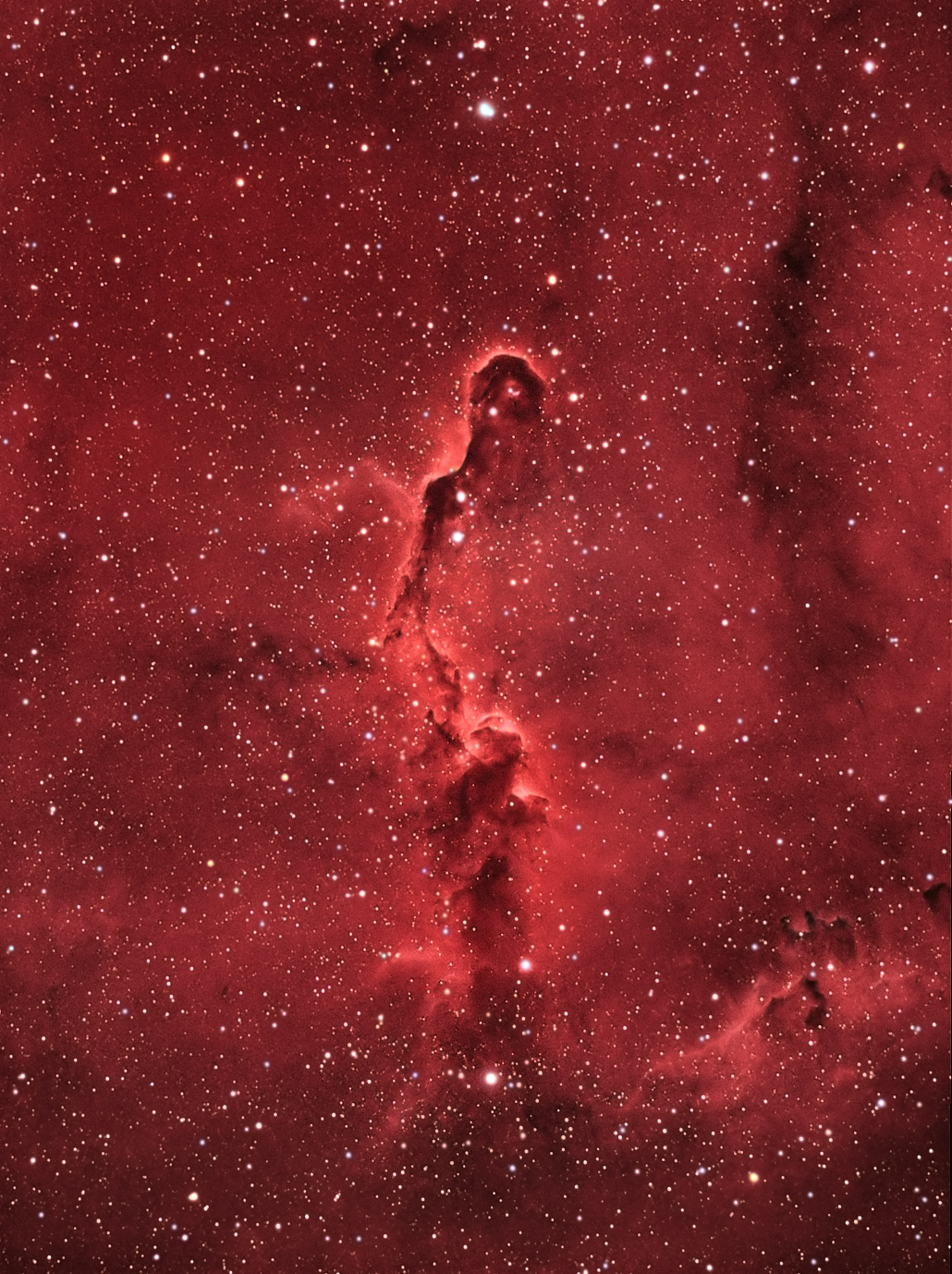Elephant Trunk Nebula (Van den Berg 142)
Characteristics:
Magnitude: Unknown.
Size: Roughly about 45 arcminutes (Elephant Trunk itself). The
Elephant Trunk is located within the faint IC1396 emission nebula,
which is about 3 degrees across.
Distance: 2,450 light years
RA: 21h 35m 37s
Dec: 57degrees 24' 03"
Description:
The Elephant Trunk Nebula is located within the large IC1396 emission
nebula complex. This beautiful area of hydrogen gas and dust is a
stellar nursery that holds many young nascent stars. The top
region of the Elephant Trunk is being blown away by radiation emitted
from new-born stars that
are igniting deep within the nebula.
Although the dark gas and
dust are opaque to visible light, infrared light passes through this
region easily, permitting a view of the inner workings of the Elephant
Trunk. Please click here
for an infrared view of this area taken through the Space InfraRed
Telescope Facility (SIRTF), now known
as the Spitzer Space Telescope.
Photographic Details:
Date: May 29, 2004 (Ha image);
June 18, 2004 (RGB image)
Scope: Takahashi Sky 90 at f4.5 with field flattener/focal
reducer, on the G11 Losmandy Mount.
Autoguider: STV with e-finder.
Camera: SXV-H9.
Filters: Astronomik Ha filter (13 nm bandpass).
Exposures: Ha:(HaR:G:B). Ha image: 18 x 5' each, unbinned. RGB image: 5 x 5' each channel
(25 minutes per channel), unbinned. Total exposure 165 minutes.
Conditions: May 29: Temperature
55 degrees F;
above average transparency; above average seeing; intermittent breeze.
Post-processing: No dark, bias, or flat frames used. Two-star aligned
in
MaximDL; Sigma combined using RC Sigma Reject plug-in for MaximDL,
followed by DDP
in ImagesPlus (IP). Subsequent
levels and curves adjustments in Photoshop CS (16 bit format). Ha
was combined with RGB using the technique of Luminance
Corrected RGB. Star color was good in the RGB image but
muted in the Ha:(HaR:G:B) composite. In order to recapture star
color, I used the original RGB image as a layer on top of the
Ha:(HaR:G:B) composite, selected the stars in the
RGB image using the magic wand, used this as a mask for the RGB image,
and then assigned "color" mode for the RGB image layer.
This restored the original star colors of the underlying Ha:(HaR:G:B)
composite without affecting the rest of the image.
Please
note: Graphics on this website may not be reproduced without
author permission.
Back to Nebulae
Home

